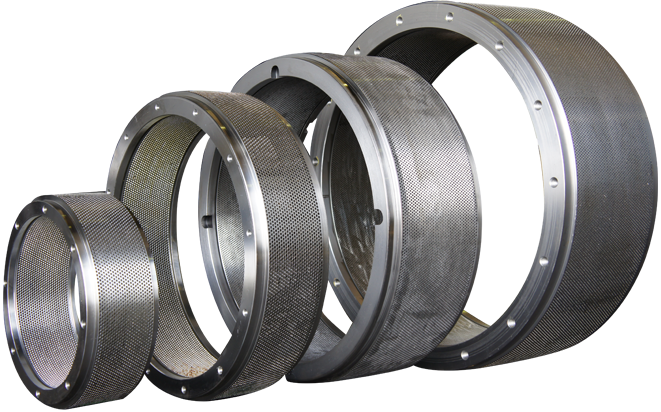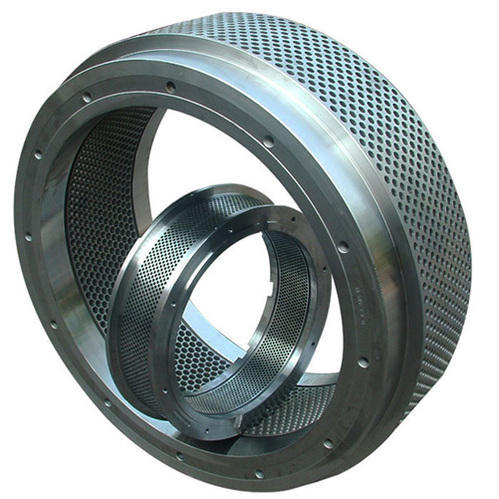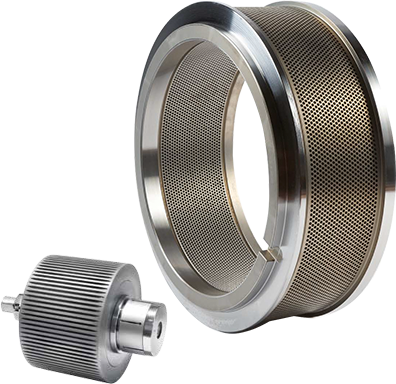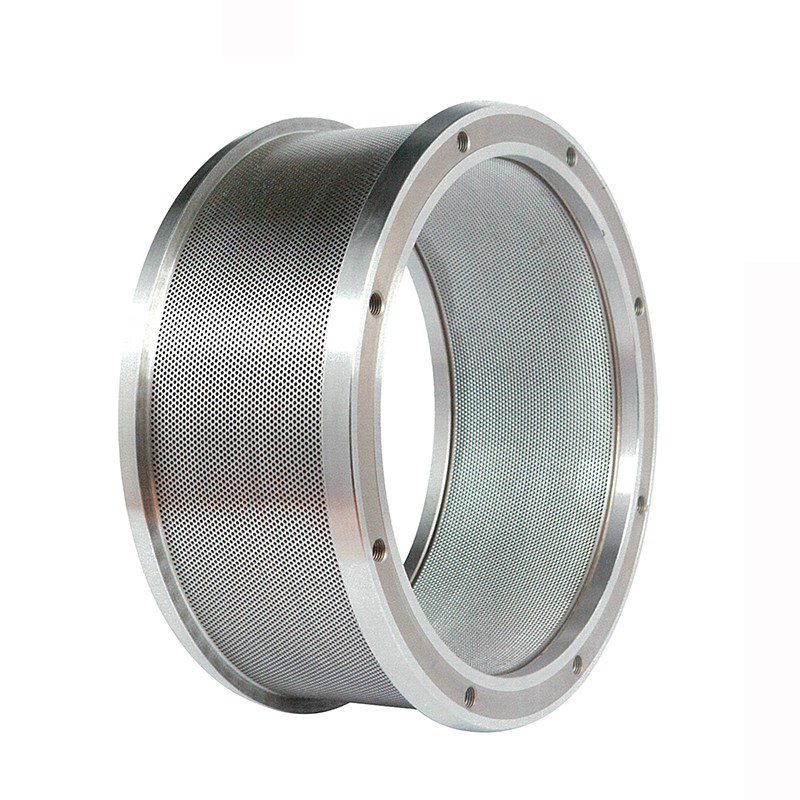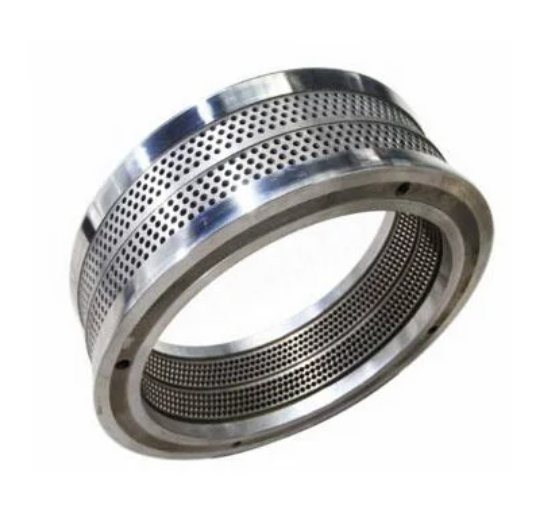The die is the core component in the pellet mill. And it is the key to making feed pellets. According to incomplete statistics, the cost of the pellet mill die loss accounts for more than 25% of the maintenance cost of the whole production workshop. For every percentage point increase in fees, your market competitiveness drops by 0.25%. So the pellet mill specifications is extremely important.
Shanghai Zhengyi (CPSHZY) is a professional feed pellet mill supplier in china. We supply ring die pellet mill, flat die pellet mill and the pellet mill parts, such as flat die, ring die, pellet mill roller, and other parts for the pellet machine.
1. Pellet mill die material
The pellet mill die is generally made of carbon steel, alloy structural steel or stainless steel through forging, machining, drilling holes, and heat treatment processes. The user can choose according to the corrosion of the particle raw material. The material of pellet mill die should be made of the alloy structure steel or stainless steel ring mold.
Carbon structural steel, such as 45 steel, its heat treatment hardness is generally 45-50 HRC, it is a low-grade ring die material, its wear resistance and corrosion resistance are poor, now basically eliminated.
Alloy structural steel, such as 40Cr, 35CrMo, etc., with heat treatment hardness above 50HRC and good integrated mechanical properties. The die made of this material has high strength and wear resistance, but the disadvantage is that corrosion resistance is not good, especially for fish feeding.
The price of the ring dies, which are made of material, marigold pellets, wood chips, straw pellets, etc., is much higher than stainless steel. Both 20CrMnTi and 20MnCr5 are low-carburizing alloy steels, both of which are the same, except that the former is Chinese steel and the latter German steel. Since Ti, a chemical element, is rarely available abroad, 20CrMnTi or 20CrMn from China is used instead of 20MnCr5 from Germany, so it does not fall within the scope of alloy structural steel. However, the hardened layer of this steel is limited by the carburizing process to a maximum depth of 1.2 mm, which is also an advantage of the low price of this steel.
Stainless steel materials include German stainless steel X46Cr13, China stainless steel 4Cr13, etc. These materials have better stiffness and toughness, higher heat treatment hardness than carburized steels, hardened layers than carburized steels, and good wear and corrosion resistance, resulting in longer life and naturally higher prices than carburized steels. Due to the long life of the stainless steel die steel, the replacement frequency is low and therefore the cost per tonne is low.
Generally, the die material for ring die pellet mill is the alloy structural steel and stainless steel materials.
2. Compression ratio of pellet mill die
i=d/L
T=L+M
M is the depth of the reduced hole
The Compression ratio (i) is the ratio of die hole diameter (d) and effective length (L) of the die.
According to nature of raw material, the ratio is 8-15, The user chooses the compression ratio of the die, and adjusts the specific compression ratio, such as selecting a slightly lower compression ratio, which is beneficial to increase the output, reduce the energy consumption, reduce the wear of the ring mold, but also reduce the quality of the particles, such as the pellets is not strong enough, the appearance is loose and the length is different, and the powder rate is high.
3. Opening rate of ring die
The opening rate of the pellet mill die is the ratio of the total area of the die hole to the effective total area of the die. In general, the higher the opening rate of the die, the higher the particle yield. Under the premise of ensuring the strength of die, the opening rate of the ring die can be improved as far as possible.
For some raw materials, under the condition of a reasonable compression ratio, the pellet mill die wall is too thin, so that the die strength is not enough, and the phenomenon of exploding die will appear in the production. At this time, the thickness of the ring die should be increased under the premise of ensuring the effective length of the die hole.
4. Matching between pellet mill die and roller
It is the most important technology to improve the efficiency of granulation and prolong the life of the die. It should include 4 aspects:
- New ring die with new pressure roller, avoid excessive use of pressure roller.
- According to the nature of materials, machine type characteristics of the selection of different forms of the pressure roller, in order to achieve the best extrusion efficiency between the die and roll.
- The key to gap fit is stability and the principle is: without affecting capacity, try to relax.
- Control feeding speed, adjust the long and short position of feeding scraper to control feeding position, material layer distribution.
5. Pellet mill die process processing
Ring die holes are extremely demanding in terms of processing and processing equipment, and for stainless steel, special gun drills and vacuum heat treatment equipment are required to produce high quality ring dies. The excellent high temperature vacuum quenching process can significantly improve the rigidity, hardness, abrasion resistance, fatigue strength and toughness of steel. However, the ability to guarantee a balanced hardness layer for every die hole requires a high level of processing skills and long experience.
6. The dies surface roughness of the inner wall of the die hole
Surface roughness is also an important indicator of ring die quality. In general, a small value of inner wall surface roughness will improve the quality of the fit, reduce wear and extend the life of the ring die, but the cost of processing the ring die will increase.
Ring hole roughness also affects the compression ratio and forming of the particles, as well as production efficiency. At the same ring die compression ratio, the lower the roughness value, the lower the extrusion resistance of wood chips or feed, the smoother the discharge, the higher the quality of the pellets produced and the higher the production efficiency. Good ring die hole processing can be up to 0.8-1.6 microns, ring die roughness is about 0.8 microns, the correct machine on the disposable material, no grinding.


